
31 minute read
Avenues for Youth
PROVIDING A ROOF FOR OUR YOUTH
BY RYAN PATCHIN
The mission of Avenues for Youth is simple: to partner with youth experiencing homelessness to achieve their dreams.
For over 25 years, Avenues for Youth has been supporting youths experiencing homelessness in Minnesota. Whether a young person needs a place to stay for just one night, or a year and a half, Avenues empowers youth to fi nd their path out of homelessness. Since inception, Avenues has supported thousands of youth experiencing homelessness. Avenues has signifi cantly expanded in the past fi ve years to support more youth and deepen its supportive services to ensure its impact on youth and the community is long-lasting and transformative. Today, Avenues supports more than 300 homeless youth annually.
Avenues provides housing and support to youth experiencing homelessness through a number of programs: • Minneapolis Avenues: a shelter and transitional living program in North Minneapolis, supports 21 youths at a time for up to 18 months. • Brooklyn Avenues: a shelter and transitional living program in Brooklyn Park, supports 12 youths at a time. • Young Families: Our Future provides youth-led families who are experiencing homelessness with apartments, rent subsidies and supports. • ConneQT: provides LGBTQI+ youths with shelter and transitional living through host homes, or community members who have opened up their homes for a youth to live with them. • Abule Collective Housing: Avenue’s newest program, which pairs BIPOC youth with BIPOC community members to providing transitional housing, mentoring, and culturally centered support.
At Avenues, our programs are centered around education, career, mental health, and wellness support to youth.
I asked Melissa Cuff, Director of Development at Avenues for Youth, as well as Marketing and Communications Manager, Rachel Blair-Paladino if they could tell me more about their programs and the people they serve:
“Avenues supports youth ages 16-24 who are experiencing homelessness. The majority of youth we work with are youth of color and experiencing a number of barriers to housing, such as poverty, family issues, or safety issues. [Our] Avenues ConneQT program specifi cally supports youth who identity as LGBTQI+ because a disproportionate number of youth experiencing homelessness are LGBTQI+.
“Throughout all of the programs, Avenues centers on a social justice and trauma-informed approach to our work.”
I asked the pair what upcoming events Avenues for Youth had planned?
“Avenues’ annual Building on Dreams event is on March 23, 2021 from 7:30 – 9:00 a.m. The virtual event, hosted on Whova, is free and open to anyone who wants to attend.”
“Building on Dreams is MCd by Kare 11’s Rena Sarigianopoulos. You’ll hear from a variety of speakers, including our Keynote Speaker Rebecca Lucero, the Commissioner of the Minnesota Department of Human Rights, and youth impacted by Avenues. Money raised during the event directly impacts youth experiencing homelessness.” Learn more about the event and register at https://avenuesforyouth. org/building-on-dreams/
How has COVID-19 impacted the way Avenues for Youth administers services?
“Keeping youth safe and healthy has always been a top priority at Avenues. With the help of our partners, we were prepared for COVID-19 and swiftly took actions to keep youth safe. This included minimizing traffi c within our spaces and temporarily stopping in-home visits, and reducing three-person bedrooms to two-person bedrooms (to keep social distancing) at Minneapolis Avenues.” They told me they’ve implemented “In-depth sanitizing regimens,” and they’re “Wearing masks in common areas and maintaining social distancing at least six feet apart at all times.” The administrative team at Avenues quickly adapted to a remote work environment.
How can people get involved with Avenues for Youth? Donations? Volunteers?
“There are a number of ways to support Avenues for Youth! You can shop our Amazon Wish List, make a donation, or learn about becoming an Avenues Ally or Dream Maker Society member.”
“Recently, Avenues made a big impact on youth during the holidays. Thanks to many generous donors, every youth and family in our programs [received] gifts and had something to unwrap during the holidays. Youths got new winter gear, candy, and gift cards to pick out whatever they wanted. Several youths said that this was their fi rst time receiving gifts for the holidays.” Learn more about Avenues for Youth, and learn how you can help support their mission at www.avenuesforyouth.org.
LEATHER LIFE | BY STEVE LENIUS
Rubber, Leather and Bootblacks in November
I am beginning to allow myself to feel hopeful for the future. A little bit, anyway.
News item: The International Mr. Leather/International Mr. Bootblack (IML/IMBB) weekend has been scheduled to take place November 11-14, 2021, in Chicago.
Further news item: IML/IMBB’s scheduled time slot is the week after the 25th Mr. International Rubber (MIR) contest weekend, Silver Jubilee edition—which will be held Nov. 5-7, 2021, also in Chicago. (Anyone up for two consecutive fetish weekends in November in Chicago?)
More news items: There’s a new administration in Washington, D.C., that seems to be taking the pandemic, and plans to end it, seriously. Vaccines against the coronavirus have been approved and are being rolled out, albeit slowly.
So I am feeling something I have not felt for what seems like a long, long time: cautious optimism. Furthermore, after having written column after column about getting through the pandemic I have a chance, at long last, to write a column that looks forward to a time when the pandemic will possibly have subsided.
IML and IMBB are usually held during Memorial Day weekend in May. But the IML/IMBB event, like so many other things, did not happen at all in 2020. And planning the event for Memorial Day weekend doesn’t seem like a good idea in 2021, either.
On the IML/IMBB website (imrl.com), a video announcement of the event’s November date for 2021 notes that there is no guarantee that public health authorities will allow either large events or international travel to resume by Memorial Day (the ability to travel internationally is important—note that all three of these contests have the word “International” in their names).
The IML/IMBB announcement summarizes the situation: “Our hopes of being back together in May as a tribe have once again been blindsided by uncertainty.”
Maybe by November enough people will have been vaccinated, and herd immunity will have kicked in, and the coronavirus will no longer be such a health threat—in which case, let the parties begin (or perhaps resume).
Even though no local or regional contests have been held since the beginning of the pandemic, I would not think there should be a problem getting contestants for these contests. The contestants who could not compete in 2020 would finally be able to do so now.
On the other hand, how many of us will feel safe enough to come out of our COVID-19 bunkers? Will enough of us feel safe enough to break our isolation, travel to Chicago and show up? Remember that early in the pandemic it was decreed that restaurants and bars could open up again. But many people still stayed away because they didn’t feel safe. Might that happen again with events like these?
I can see people reacting to the easing of the pandemic in one of two
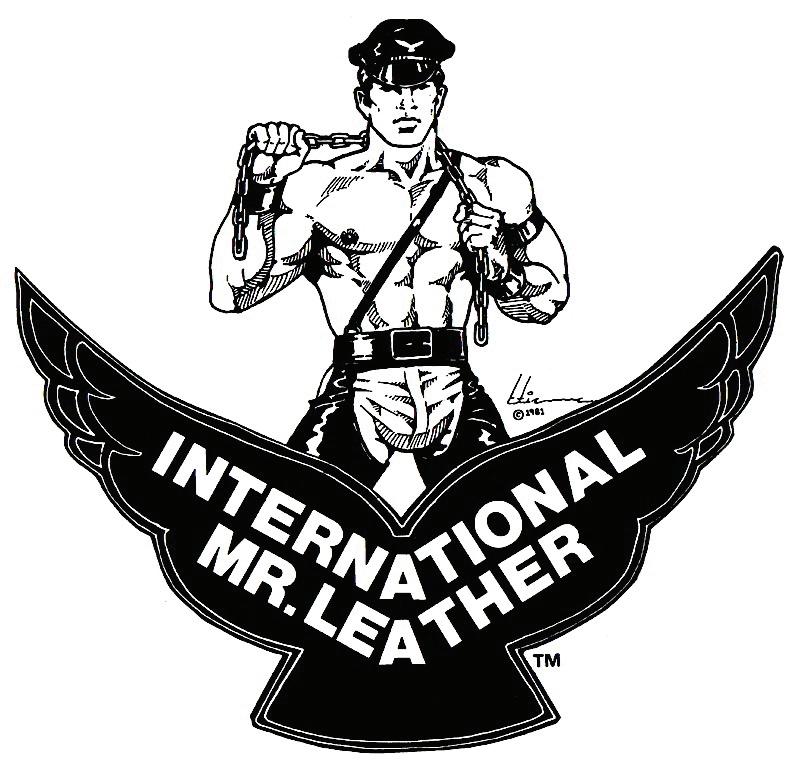

Courtesy of International Mr. Bootblack
ways. Some might say, “I am so starved for human contact, I can’t wait to be part of a crowd again!” Other people might have the opposite reaction: “I don’t know—it’s supposed to be safe now, but is it really? I’m still not sure about this.”
Major events like pandemics can leave long-term scars on those who have gone through them. I am told that some people who went through the Great Depression in the 1930s were skittish for the rest of their lives about putting money in a bank. Likewise, even if the authorities declare by next November that herd immunity has been achieved, the coronavirus is no longer circulating, and it is again safe to attend large group events—will I be willing to trust that this is really true? Will I go to IML but feel uneasy all weekend?
I would love to support these events. I would love to be at a large fetish event again— but not if it’s going to kill me. We have already seen the folly of large, maskless, non-distanced rallies and other superspreader gatherings at the height of the pandemic, and what happened in their wake.
To their credit, the organizers of IML/IMBB state in their video: “We cannot wait to see our tribe in person again. However, your safety and peace of mind remain our first priority.”
In the end, it may not come down to whether the event planners are able to make the decision on whether or not to go ahead and present the event. The City of Chicago and State of Illinois might make the organizer’s decision for them if public health authorities deem such large gatherings would not yet be safe, even in November.
So we wait and see—and we hope. Collectively and individually, we make our plans and hope that when the time comes we can put our plans into action.
I have my room in Chicago reserved for November. Will I be able to use it? Will I feel safe enough to use it? I hope so.
One last thought: A tip of my leather hat to everyone involved in planning these events and making them happen. The planners of these events are certainly not in an easy position right now. At this point, preparing for large events that might not happen requires huge leaps of faith and trust. I sincerely hope these leaps pay off—the community will be better off if they do. If or when they happen, events like these will be part of the healing our community needs after the draconian restrictions the pandemic has imposed.

One Treatment Center Does Not Fit All
Exclusively Serving the LGBTQ+ Community
Located in the Minneapolis Metro area of Minnesota, we specialize in:
• Drug & Alcohol Abuse • Specializing in Crystal Meth and Sexual Compulsivity • Residential & Intensive Outpatient Programs • Exclusively providing the LGBT community a comfortable safe alternative to traditional treatment programs for 30 years.
The Pride Institute accepts insurances from:
• Blue Cross Blue Shield • Health Parters • Preferred One • United • Aetna • Cigna • United • UBH/Medica • MN Medicaid
Brighten your future - contact us today.
www.pride-institute.com 952.934.7554/ 800.547.7433 Please visit jobs.uhsinc.com/pride-institute/jobs for all open positions
CAUSES | BY RYAN PATCHIN
MINNESOTA BLACK HISTORY: PART I
Minnesota may be a skosh north of north, but that doesn’t exempt us from a long, complicated history with civil rights.
Slavery was never a legal practice in Minnesota, but that’s not to say it didn’t happen. In the 1800s, military offi cers stationed at Fort Snelling brought slaves with them when they came to the Northern fort. The same was true for traders and vacationing southerners. Dred Scott was brought to Fort Snelling in 1837, by Dr. John Emerson, a surgeon serving in the U.S. Army.
It was at Fort Snelling where Scott would meet his wife, Harriet. Their marriage was offi ciated by Lawrence Taliaferro, a slave owner who would eventually transfer Harriet’s “ownership” to John Emerson. Later in 1837, Emerson would move on to Missouri—leaving the Scotts behind, leasing them out to fellow offi cers on the base.
Even after Emerson’s death, the Scotts were leased out by Emerson’s widow for three years. Harriet Scott pushed her husband to vigorously pursue their freedom as they were traded around like equipment. The Scotts had two daughters (the eldest born in free territory), Eliza and Lizzie, and lived in constant fear of their children being sold.
Through their pastor, the Scotts were connected to their fi rst attorney, and Scott v. Emerson was tried in 1847, in the federal-state courthouse in St. Louis. The case took so long to get started that the Scott’s lawyer moved away and another was brought in to represent them. After tasting victory, an appeal crushed their dreams of freedom.
They fought on for ten more years, and were fi nally granted manumission in 1857, by Taylor Blow. Dred Scott spent 18 months of his life as free man. He died in 1858. Harriet Scott lived almost 20 years as a free woman.
In 1868, after two prior rejections, an amendment was passed, allowing Black men to vote. The Fifteenth Amendment to the U.S. Constitution granted the right nationwide in 1870. Minnesota was considered a progressive state, yet in the 1860s, St. Paul segregated its schools, and hotels and restaurants regularly refused service to Black people. It wasn’t until 1869 that segregation of schools was banned in St. Paul.
Fast forward to 1885: Minnesota passed the Equal Accommodations Act, guaranteeing Blacks equal access to all public places and hotels. Predictably, the problems didn’t stop at the gavel, and the legislation was challenged in several landmark cases. Notably, in 1887, William Hazel, a Black architect, was denied a room at the Clarendon and at the Astoria hotels in St. Paul, because he was a Black man. Hazel fi led a lawsuit, and he won. A number of comparable cases saw similar outcomes.
The 1930s saw the family of Arthur and Edith Lee harassed out of their South Minneapolis home (after a two-year stand). The late 60s saw Plymouth Avenue burning as Blacks protested police brutality. The Minnesota National Guard was called in to maintain safety and control over North Minneapolis. Sound familiar?
After decades of steady growth, the 2010 census showed 274,412 Blacks in Minnesota. In 2014, Arthur and Edith Lee’s South Minneapolis house was added to the National Register of Historic Places. In 2016, Wilhelmina Wright was appointed the fi rst Black female federal judge in Minnesota. But by 2020, it felt as if we’d gone 50 years backwards.
And that’s where we’ll pick up in the next issue of Lavender.

A general parody on the 1860 presidential contest, highlighting the impact of the Dred Scott decision on the race. Library of Congress The Honorable Wilhelmina M. Wright received her federal judicial commission on February 18, 2016. Image courtesy of Wilhelmina M. Wright

SERVE OUR SOCIETY | BY MIKE MARCOTTE
National Alliance on Mental Illness Minnesota
NAMI Minnesota off ers two LGBTQ+ support groups, with a third starting this year
It goes without saying, but the last year has been challenging on so many levels. So take a moment and ask yourself, ‘how am I feeling?’
“The pandemic has impacted nearly everyone’s mental health due to the diffi culty of facing uncertainty, being isolated, and losing jobs. And frankly, COVID itself is being linked to higher rates of depression and anxiety,” said Sue Aderholden, the Executive Director for the National Alliance on Mental Illness (NAMI) Minnesota.
NAMI Minnesota, based in Saint Paul, works to improve the lives of children and adults with mental illness through educational programs, support groups, and advocacy work. The nonprofi t, incorporated in 1977, has affi liates around Minnesota, from Grand Rapids to Willmar. Before the pandemic, NAMI offered 75 support groups. Currently, they have 29 virtual support groups, all of which are free for attendees diagnosed with a mental illness.
The general public are invited to participate in classes, currently held virtually, to better understand loved ones. Recent classes addressed back to school anxiety, along with eating and substance abuse disorders. In addition, NAMI’s outreach includes a program for employers to help their employees address their mental wellness. Plus, they are expanding outreach to the BIPOC community through a young adult multicultural advisory committee.
SUPPORTING THE LGBTQ+ COMMUNITY
NAMI Minnesota has two support groups for LGBTQ+ individuals who live with a mental illness, with a third expected to start in early 2021.
Marcus Linn from Minneapolis became involved with NAMI as a peer support member eight years ago following a suicide attempt and hospitalization. Linn is now a co-facilitator of a LGBTQ+ group, which typically has more than 10 participants who vary in age and orientation. “I strongly believe in volunteerism and especially have aimed my efforts toward the queer community, because that is who I am, what I know, who I love, and need to see strong and healthy,” Linn said.
“When I encounter a member of the community who is struggling with their mental health, the fi rst thing I relate to them is that they are not alone,” Linn continued. “Talking to others and using mental health resources is a fi rst step out of the morass.”
Executive Director Aderholden and her staff are aware that those in the LGBTQ+ community face additional strain and pressure from bullying, violence, and discrimination. “We provide suicide prevention classes to the community knowing that the risk of suicide is higher in the LGBTQ community,” Aderholden said.
“I myself get so much out of being a support group facilitator,” Linn added. “I can relate to everybody’s struggle even if it isn’t identical to mine. I have facilitated support groups most of my working life, and it feels good to be able to continue using those skills after becoming totally disabled.”
NAMI’s work for the LGBTQ community goes beyond their support groups. Their In Our Own Voice series, which is open to the public, features speakers from the LGBTQ community who live with a mental illness. Meanwhile, at the State Capitol, NAMI is actively supporting a bill to ban conversion therapy. The NAMI Minnesota website has a dedicated section for the LGBTQ+ community, which includes fact sheets on suicidal behavior in LGBTQ youth and LGBTQ+ treatment disparities.
“NAMI provides a vital service to our community, and we are lucky to have groups for LGBTQ+ people, which is not the case for so many people in the country,” Linn said. “ It isn’t always easy to open up, even with our own. The fact that these community specifi c groups exist cuts through the fear and often reality of dealing with other people’s prejudices. We don’t have to defi ne or defend ourselves with our own community members, and a lot of us have experienced those kinds of traumas too often.”

The National Alliance on Mental Illness Minnesota hosts an annual walk fundraiser, which was able to take place remotely in 2020.
Before and during the COVID pandemic, the National Alliance on Mental Illness Minnesota has advocated at the State Capitol to ban conversion therapy.
Minnesota’s Lieutenant Governor, Peggy Flanagan, joined NAMI supporters to discuss children’s mental health.
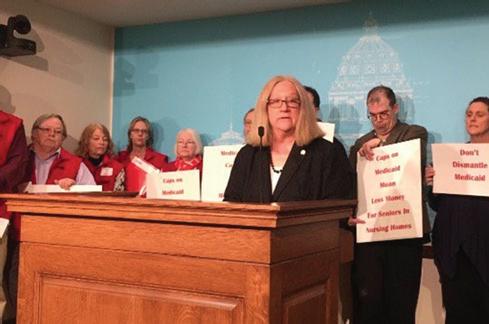
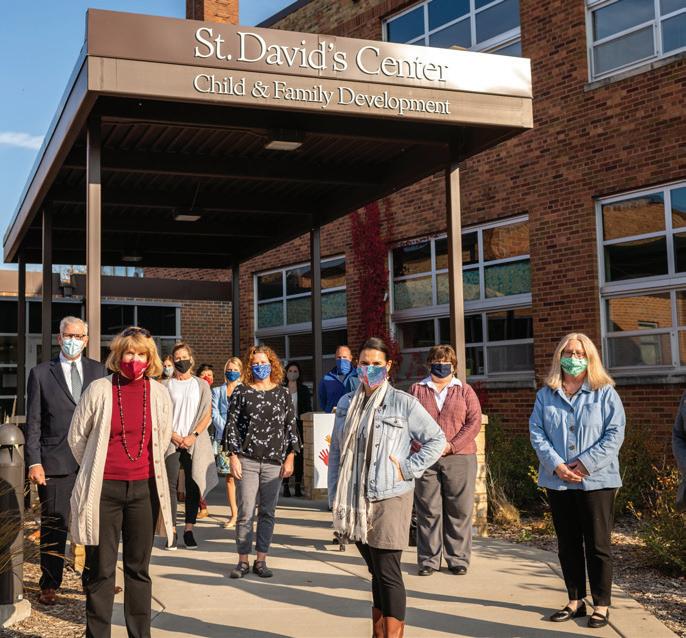
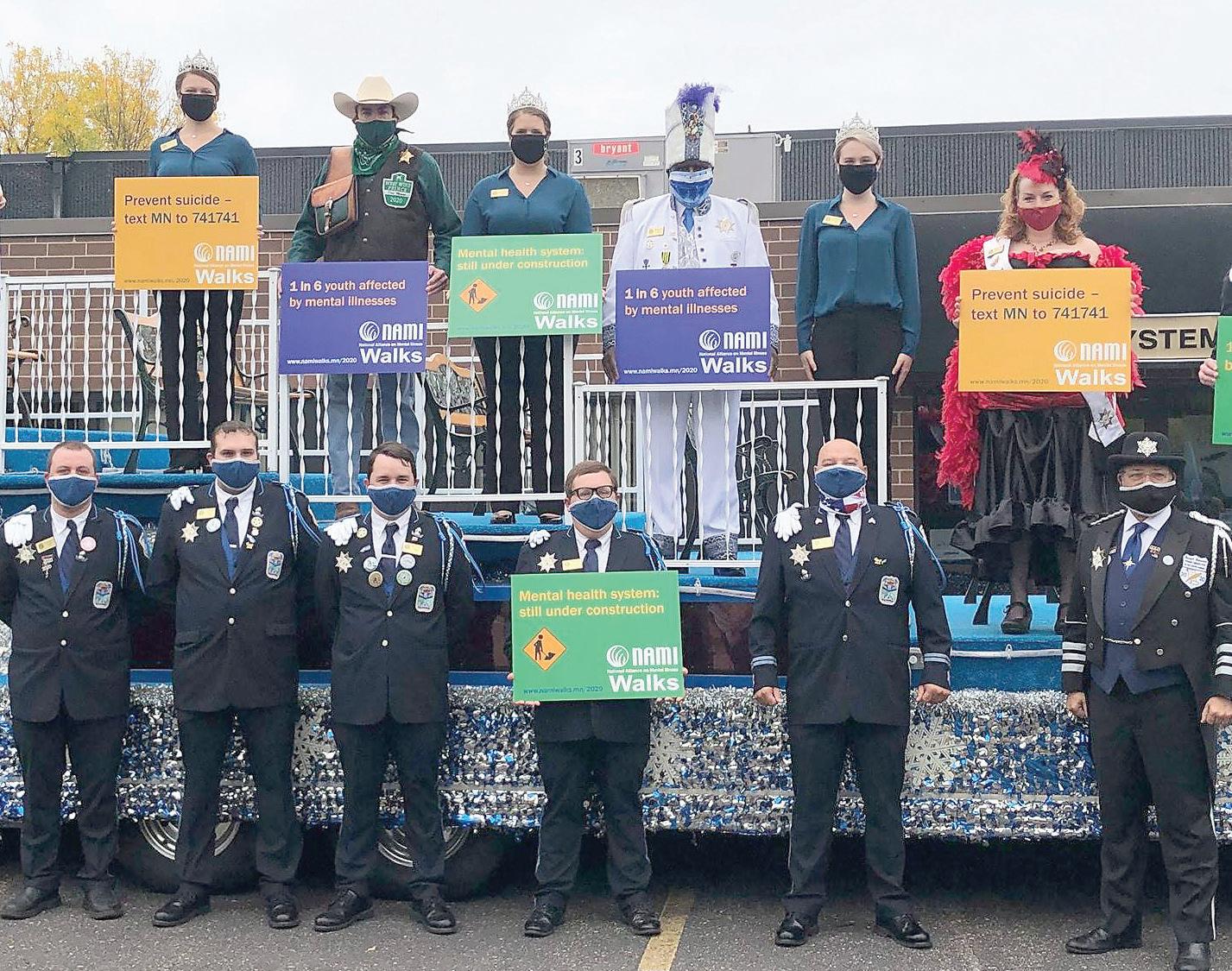
Royalty from the St. Paul Winter Carnival took a moment to applaud the efforts of the National Alliance on Mental Illness Minnesota, a nonprofit offering 29 virtual support groups.
ADAPTING WHILE PROVIDING A CRITICAL SERVICE
The need for the classes, support groups and other services NAMI Minnesota provides has increased since the COVID-19 pandemic began. At the same time, staff were challenged to turn in-person support groups into virtual communities. Like other nonprofits, NAMI Minnesota had to reduce revenue expected from their fundraising events. Fortunately, the organization was the recipient of a Paycheck Protection Program (PPP) loan and has not faced the decision of laying off staff.
ASK FOR HELP OR BECOME AN ADVOCATE
Phone calls to NAMI Minnesota’s Helpline are up 35% since the COVID pandemic started. More than 3,100 people connected in the last year, looking for assistance in navigating the mental health system.
“People, both children and adults, who were living with a mental illness prior to COVID-19 are struggling, and more people are struggling with their mental health since COVID-19 began,” Abderholden added.
A Kaiser Family Foundation tracking poll in mid-July found that 53% of adults in the United States reported their mental health was negatively impacted due to worry and stress over the coronavirus.
“If you are struggling, reach out. You can talk to your family physician, or seek help from a mental health professional,” said Abderholden. “There are many clinics and therapists that are welcoming to the LGBTQ+ community.”
If you are feeling suicidal, please call the National Suicide Prevention Lifeline at 1-800-273-8255. You can also text MN to 741741 to be connected to a counselor. The Trevor Project is a free resource and is available 24 hours a day by calling 1-866-488-7386.
At NAMI Minnesota, they are looking for individuals wanting to lead support groups following proper training, become members of their legislative committee, and donate to further their mission. You can connect with the National Alliance for Mental Illness Minnesota at www.namimn. org or by calling (651) 645-2948.
To nominate a Minnesota-based nonprofit for Lavender’s Serve Our Society series, email mike@givemethemike.com. Read previous features on Mike’s website, www.givemethemike.com.
BOOKS | BY E.B. BOATNER
Lazarus Rising
Joseph Caldwell Delphinium Books $24.95
Artist Dempsey Coates meets fireman Johnny Donnegan after offering a place to him and crew after extinguishing a conflagration near her Tribeca loft. Johnny falls in love, they join, separate, rejoin, but Dempsey contracted AIDS through intravenous drug use. Catholic Johnny wants to marry, but Church marriage is forbidden; his need to use a condom prevents the required consummation. Just once, Johnny prays for her cure. All three remain bound by their rituals; Dempsey counting out her daily pills…and not taking them; Johnny meticulously cleaning the firehouse windows and refusing a secular wedding; the priest clinging, in spite of all reason, to the Church’s definition of marriage. Then, the priest agrees to marry, and Dempsey’s doctor calls. A miracle? Perhaps, but it’s a disquieting one.
Husbands that Cook
Ryan Alvarez and Adam Merrin St. Martin’s Griffin $32.50
Their subtitle promises, “More than 120 Irresistible Vegetarian Recipes and Tales from Our Tiny Kitchen,” and do they deliver! Some recipes sprang from their eponymous blog from 2015, but most are “special,” never before shared. “Food is love!” is their motto, and “Enjoy!” their exhortation. Adam was twenty-something before he was lured from the microwave onto the cooking path that Ryan had trod as a toddler, watching his mother and abuela performing miracles in the kitchen. Adam had a twenty-five-year music career, seventeen shared with Ryan, traveling, cooking, gardening. Developing a recipe is just like writing a song,” he notes, and if you follow, experiment and expand your own compositions with these eclectic vegetarian recipes, you may also become a kitchen impresario. Mouthwatering photos accompany.
The Empire of Depression
Jonathan Sadowsky Polity $35
Is “depression,” as diagnosed in Western society, a mood or an illness? A recent product of our modern age? Were forefathers and mothers merely “sad”? What about Abraham Lincoln’s crippling “melancholia” and was it related to the Japanese “utshuso” or the Punjabi “sinking heart”? Sadowsky draws widely from numerous fields including literature, history, anthropology, and medicine to give a more nuanced, less dogmatic view of the subject. Human suffering is real, even though not all people or cultures share the same concepts of “sickness.” Europe, he notes, is multicultural, and boundaries of “the West” are vague at best. No one approach to depression works for everyone, and knowing more of Depressions history can liberate sufferers in the present from the “negative patterns of the past.”
Never Give Up: A Christopher Family Novel
W.D. Foster-Graham Author House $20.99
Foster-Graham’s Mark My Words: A Christopher Family Novel was reviewed here in issue 611. There we met Black entrepreneur Allan Beckley turning sixty, through family eyes. Here, we find Earl James Berry, one of the first African-American district attorneys in Hennepin County, later a judge. Foster-Graham adds a crime; Judge Berry, attacked, lies unconscious and hospitalized. His past also shines through his wife’s and family members’ memories, including a granddaughter who has inherited the Berry gift of “seeing” that may help capture the attacker. Their collective stories give an intimate view into black lives in Minneapolis from the 1930s on, and the richness of family life mentored by adults imbued with integrity, who never give up. “We who labor here seek only the truth.”
2021 TWIN CITIES AUTO SHOW
Usually by this time, we would be talking about an auto show – or several.
Last year’s COVID-19 pandemic has postponed all of the major auto shows in the U.S.A. until spring 2021 and beyond.
That did not stop the producers of the Twin Cities Auto Show from thinking outside the box. Instead of a March date at the Minneapolis Convention Center, they will have it outside at the Minneapolis State Fairgrounds in St. Paul starting May 15. They are calling this a “road trip” from their usual space in downtown Minneapolis.
Tickets are being sold through the auto show’s website. Parking at the fairgrounds will be free. The number of interactive exhibits – such as ride-alongs and driving experiences will be increased to hopefully fi ll space inside the fairgrounds.
Don’t be surprised if you can get pronto pups while checking out the latest models from around the world.
Until May, there’s plenty of new vehicles to check out. Some have arrived at showrooms across our readership area. Other models will be arriving shortly. Plenty of these models were expected to be in. showrooms months earlier. The pandemic caused a lot of production shifts at the onset. Instead of producing vehicles, the automakers and some suppliers made essential equipment to protect front line workers and to help patients dealing with the virus.
Many of these highly anticipated new models ranged from fully electrifi ed vehicles to everyday cars, SUVs, and trucks for the masses. Now that they’re here, let’s see what is new at your local dealerships.
FORD BRONCO: It was Dearborn’s answer to the Jeep back in 1966. After several years away, the Bronco name returned as a three-vehicle lineup designed to duel with the Jeep Wrangler on the off-road trail. Right now, only the smaller Bronco Sport is available at showrooms across the U.S.A. This Escapebased compact SUV has been enhanced with Bronco styling, as well as a more robust allwheel drive system, featuring a low ratio in four-wheel-drive and several modes for optimal off-road driving. The larger Bronco will come in two- and four-door body styles, a choice of powerful engines, and a high level of off-road capability. The larger Broncos should arrive by mid-year.
MERCEDES-BENZ S-CLASS: For decades, the fl agship of the three-pointed star has always featured the latest and greatest technology the company has ever developed. The Mercedes- Benz User Experience goes beyond just infotainment, as it has the ability to change the driving environment and all controls associated with it. Safety has been elevated with a feature that raises the side of the vehicle when a possible side impact collision is detected. As the new S- Class arrives at local showrooms, you can expect a lot of the newest technology from this fl agship to appear in other Mercedes-Benz models over the next few years.
GENESIS G80/GV80: Hyundai’s luxury brand is not only expanding their lineup.
They are also setting new benchmarks for the premium car fi eld. The GV80 becomes the fi rst SUV in the Genesis lineup with bold styling inside and out. The G80 is the third generation of this sedan offering a very sleek and expressive design. Both models will offer two turbocharged engines–a 300-horsepower four-cylinder and a 375-horsepower V6. Genesis promises a high level of technology on board, including a Smart Cruise Control that understands the way you drive and utilizes that information when you set the vehicle into cruise control. The best part about these two models is that they will start from under $49,000 – a great value in its fi eld.
TOYOTA VENZA: Not to be confused with the Camry-based crossover of a decade ago, this new Venza is a completely different kind of SUV. First off, it is the only mid-size
SUV that is offered only with a hybrid driveline. Performance fi gures fi t in-between the
RAV4 and Highlander Hybrids. Like its pre-
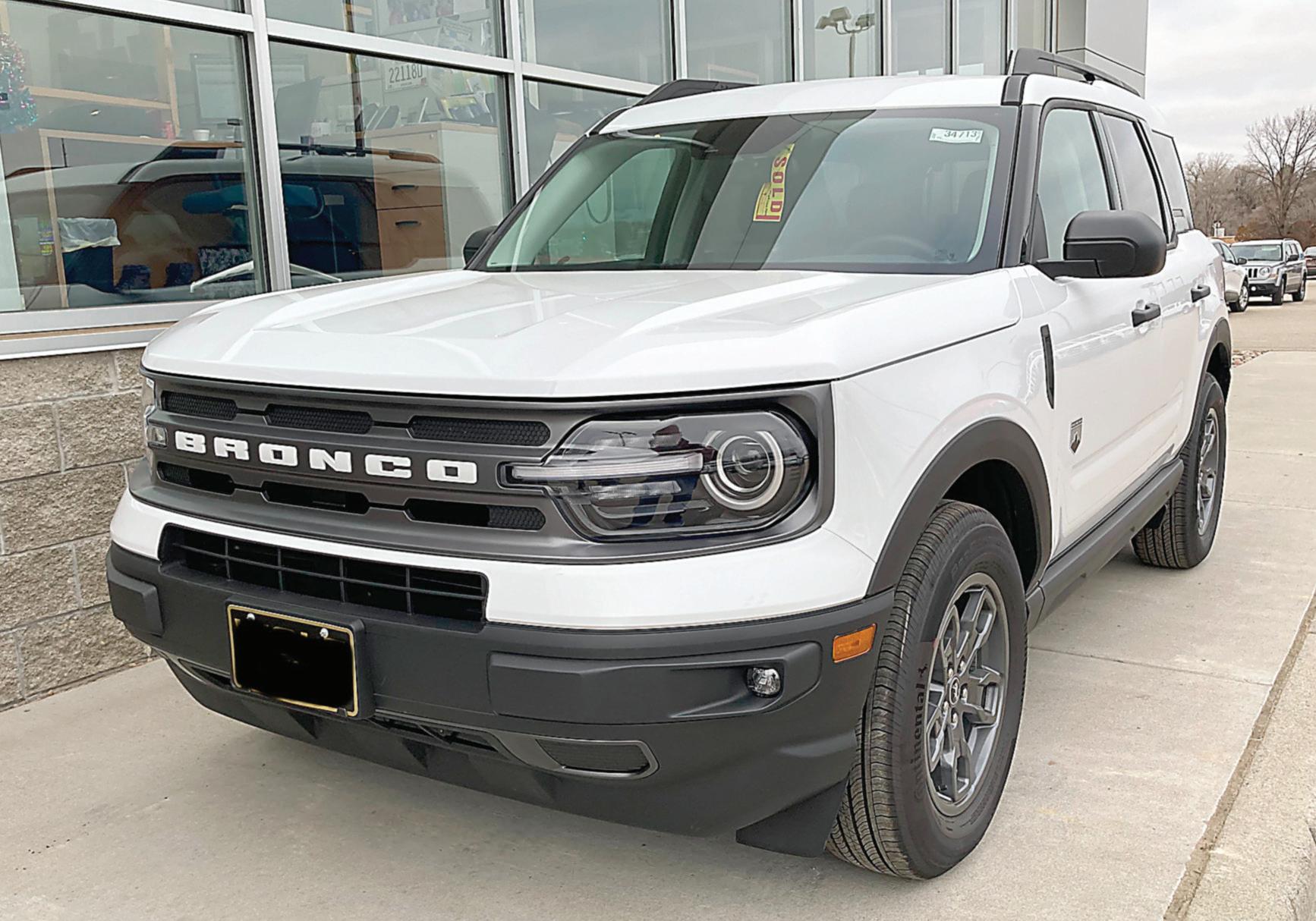
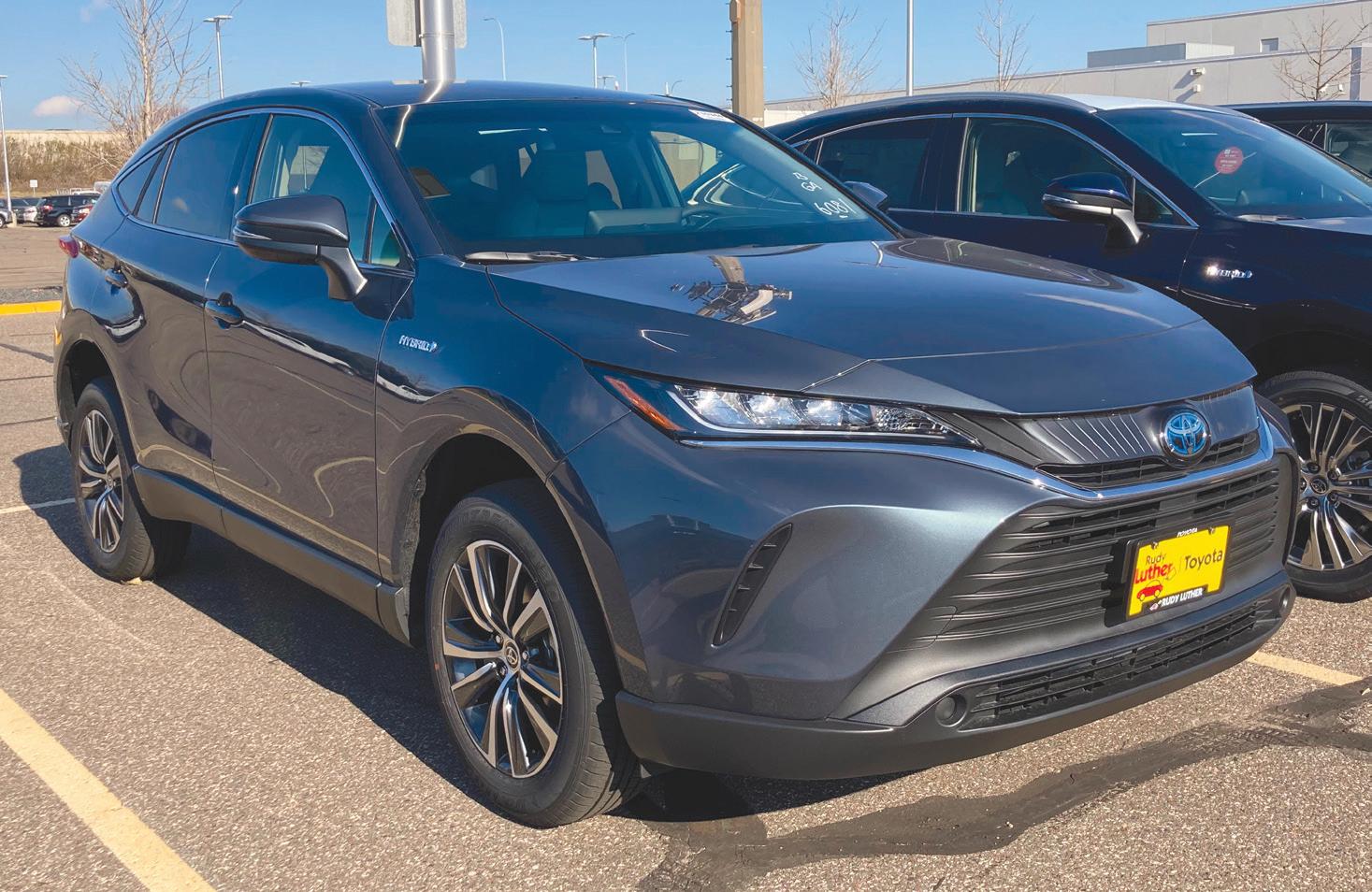
2021 Toyota Venza
decessor, it is a two-row model that seats five. Unlike the previous Venza, it offers a higher quality interior and better technology. It should appeal to those who want a luxurious two-row efficient hybrid SUV without paying premium prices.
HYUNDAI ELANTRA: The Korean brand is on a roll with new vehicles—along with performance and electrified variants— arriving in the next year or so. The new Elantra promises to elevate the compact car segment further with its advanced design and elevated technology. The new Elantra will offer a wider variety of models than ever, including two performance models—the NLine and the Elantra N—and a hybrid model. With this expanded lineup, the Elantra is ready to tackle the leaders in its class, while demonstrating that sedans are still relevant in a world dominated by SUVs.
NISSAN ROGUE: This is the first model in a sequence of new and revised models from Nissan coming this year. Perhaps this is the most important model of them all, as it is the brand’s best seller. The new compact SUV is designed to raise this model’s—and the company’s—profile with a modern design, more performance, and leading safety technology. After months of promotion and advertising, the new Rogue just arrived in showrooms in December. They have been very well received by customers so far.
These few vehicles represent just a small sampling of what’s new for 2021. Every manufacturer has something for everyone either right now or coming in the months ahead. Just keep your eye out at your local (and favorite) dealership…or, just wait for the Twin Cities Auto Show at the Minnesota State Fairgrounds in May!

2021 Hyundai Elantra
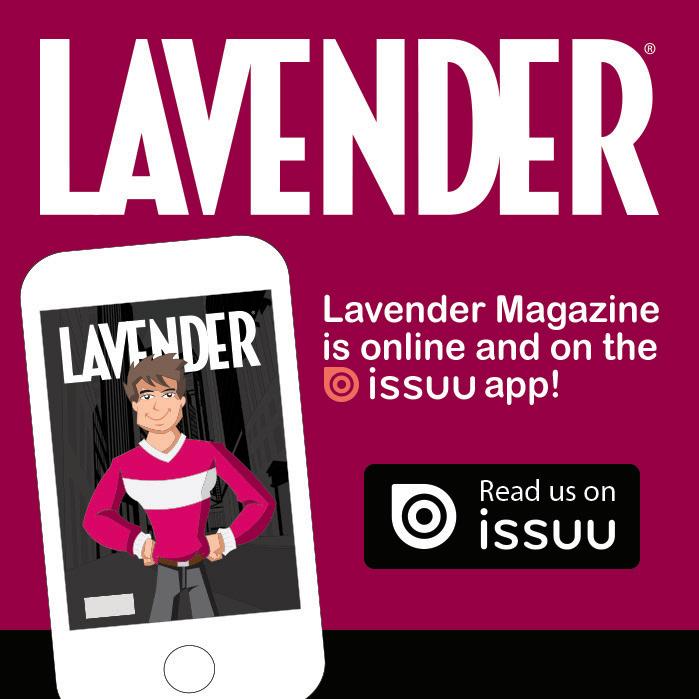



2823 CENTRAL AVENUE MPLS, MN 55418 612-208-8461 TIM@TURBOTIMS.COM
SKIRTING THE ISSUES | BY ELLEN KRUG
THE COMMON GOOD
When I was a kid growing up in the 1960s and early ‘70s, I believed that who I was, and what I did, mattered and that I had value as a person. Much of this was tied into being taught that America was the greatest nation on Earth—we Americans were exceptional and unlike anyone else in the world. There wasn’t a single challenge or problem that Americans couldn’t solve and heck, we were even able to land a man on the moon!
The messaging was clear: feel good that you’re an American and that you live in a country where you have value. That was always my identity first: American citizen; from that flowed any other identity.
And as for politics?
While the Democrats and Republicans fought over issues, one thing resonated: despite our differences and how we might disagree, we’re working for the “common good” to make America better as a nation. This included needing to selfsacrifice or delay gratification so that the larger community with all of its varied people might benefit. What a concept: the common good.
Fast forward to 2021’s contemporary messaging (and please excuse the broad-brush strokes that I’m about to use).
Today, the idea that every American matters or counts has been shaken to its core. If anything, the last four years has taught us that only certain of our countrymen are worthy. We’ve been vividly shown that many Americans view the world through the lenses of skin color and economic standing, and that we often make decisions that further our self-interests (and those of our family) over the interests of the collective humans who inhabit the United States.
Sacrifice to benefit others whom I don’t know, especially if they look or think differently than me or my group? Who are you kidding?
Even worse, the January 6th insurrection showed what happens when we’re led by someone who cares only about himself. For him and his followers—many of whom have risen to prominence because of their unabashed self-aggrandizement—the idea of sacrificing for or acting on behalf of the common good is totally foreign, something for “suckers” and “losers.”
Moreover, today many put their political party affiliation ahead of the label, “American.”
Tied into this is how social media barrages us with the message that unless you’re one of “Us”, there’s no place for you in our society. Only a certain group deserves the fruits of America—the stuff that “winners” are entitled to. As a sixty-fouryear-old woman, I’ll likely be okay in the America that we find ourselves in. I don’t think that necessarily holds true for my daughters, ages thirty and twenty-eight. I fear they will find themselves in a country where sacrificing for the common good is thought of as antiquated as the rotary telephone.
At this point, let me pivot to a story of what happens when we refuse to adhere to the idea that collectively, we all belong and each of us must sacrifice to some degree for the betterment of society in general.
Shortly before the COVID lockdown, I spoke to eighty or so high school students in Red Wing, Minnesota. In the front row were the obvious queer kids; I saw purple and pink hair, piercings, and rainbow adornments in one way or another, sitting close. My talk was about how we “Other” people who aren’t like “Us,” and I offered ideas of how to bridge the divides that separate us. At one point in my presentation, I said, “I want all of you in this auditorium to know that you matter. You deserve to live your lives authentically and deserve to be whomever you want.”
After that, several front row students began to cry; some, needing to be comforted, put their heads on the shoulders of others. Later, the queer students asked to speak to me alone, sans educators or administrators. Surprisingly, their request was granted. A dozen young humans huddled around me to talk about things important to them. Before anything else, I asked, “What did I say to make you cry?”
One student with glasses and a black tee emblazoned with a funky rainbow, answered, “Ellie, no one had ever before told us that we mattered. You’re the first person to ever say that to us.”
My heart hurt for them immediately.
“I’m sorry that you’ve never heard those words before this,” I said. “That just stinks.”
This is the America we have today, where whole groups of humans—not just queer kids, but black, brown, and Indigenous people, along with many others—feel that they lack worth. It’s one of the many outcomes that result from placing individual identities in front of our collective identity.
Somehow, some way, we must fix this. Otherwise, the America that we know and hope for will cease to exist entirely.
Ellen (Ellie) Krug, the author of Getting to Ellen: A Memoir about Love, Honesty and Gender Change, speaks and trains on diversity and inclusion topics; visit www.elliekrug.com where you can also sign-up for her monthly e-newsletter, The Ripple. She welcomes your comments at ellenkrugwriter@ gmail.com.
Arts & Crafts Frameworks Gallery ............................................................. 15 Automotive Luther Bloomington Subaru.................................................... 3 Turbo Tim’s Anything Automotive........................................ 31 Beauty & Relaxation Roosters Men’s Grooming ......................................................9 Beverages Selby Wine & Spirits ............................................................ 15 Education Northwestern Health Sciences University .......................... 19 Events Lavender Pride Pages..............................................................7 Lavender’s Pride @ Home Parties ....................................... 35 Event Venues & Services Water Street Inn.................................................................... 11 Financial Roya Moltaji, CFP® ................................................................6 ROR Tax Professionals ........................................................ 21 Gifts Outloud Promotions.................................................................7 Government Minnesota Assistance Council for Veterans ...................... 27 Health & Wellness Livea Weight Control Centers ............................................. 11 Mint Orthodontics................................................................ 23 Pride Institute ......................................................................... 25 Uptown Fitness ...................................................................... 11 Home Furnishings & Accessories Creative Lighting .................................................................. 17 Schneiderman’s Furniture..................................................... 36 The Turning Point Woodworks ........................................... 23 Home Services Castle Building & Remodeling............................................. 17 Hage Concrete .................................................................... 17 Hirshfield’s ............................................................................. 16 House Lift Remodeler............................................................ 21 Metal Roofing & Siding of Minnesota ............................... 15 Owens Companies ............................................................... 23 Renda The Roofer ................................................................. 15 Soderlin Plumbing, Heating & Air Conditioning ............... 17 Standard Heating & Air Conditioning ............................... 19 Insurance Davina Baldwin .......................................................................7 Dawn Bartell ............................................................................6 Pam Petersen, American Family Insurance............................7 Jewelry Max’s....................................................................................... 6 Legal Best & Flanagan ......................................................................6 Cloutier Law Offices ............................................................. 27 Media & Communications Radio K .................................................................................. 23 Military Minnesota National Guard ....................................................5 Mortgage Best Advantage Mortgage .....................................................7 Optical Owl Optical ............................................................................ 5 Pet Products & Services Pet Yard Pick-Up ................................................................... 25 Real Estate & Rentals Ador Bespoke Homes .......................................................... 21 Amy Ruzick, Kay Johnson–NoPlaceLikeHome Team ..........7 Dean Schlaak, Edina Realty ...................................................7 John Wong, Edina Realty .......................................................8 Josh Zuehlke–The Wille Group..............................................5 Launert, Malinda .....................................................................7 Restaurants Charlie’s Restaurant & Irish Pub .......................................... 11 Nicollet Diner ...........................................................................2 Origami ....................................................................................8 Papa’s Rooftop Restaurant & Bar........................................ 11 Red Cow North Loop ..............................................................9 Senior Living MN Board on Aging ........................................................... 27 Travel & Accommodations Water Street Inn.................................................................... 11


